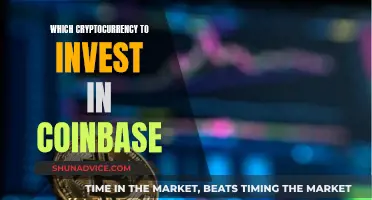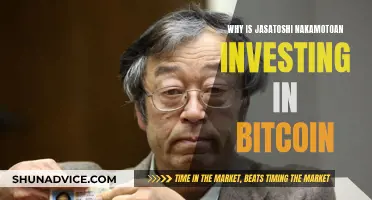
IOTA is a unique cryptocurrency that aims to be the economic layer for the Internet of Things (IoT), facilitating microtransactions and data storage on a network of connected devices. Unlike most other cryptocurrencies, IOTA does not use blockchain technology. Instead, it relies on various IoT applications, providing unmatched scalability and endless use cases. IOTA's distributed ledger technology, called Tangle, acts as a stream of individual transactions entangled together. This structure eliminates transaction fees and provides faster transaction times compared to blockchain-based cryptocurrencies. IOTA's partnership with major brands and consumer corporations, such as Bosch, Volkswagen, and Microsoft, further highlights its potential. With its innovative technology and growing list of partnerships, IOTA presents a compelling investment opportunity. However, it is essential to carefully consider the risks and volatility associated with the cryptocurrency market before making any investment decisions.
What You'll Learn

IOTA's unique approach to decentralisation
IOTA is a unique cryptocurrency that does not use blockchain technology. Instead, it relies on various Internet-of-Things (IoT) applications, making it highly scalable with endless use cases in the market. IOTA's approach to decentralisation is through a distributed ledger technology called Tangle, which acts as a stream of individual transactions entangled together. This makes IOTA one of the fastest and most expansive "blockchains" ever developed.
Tangle is the moniker used to describe IOTA's directed acyclic graph (DAG) transaction settlement and data integrity layer. It is structured as a string of individual transactions that are interlinked to each other and stored through a network of node participants. In a Tangle network, miners are replaced by a central coordinator that gathers data from the system of nodes and uses it to confirm transaction validity. This code is what makes IOTA so fast and expansive.
IOTA's decentralisation is further enhanced by its consensus mechanism, Fast Probabilistic Consensus (FPC). FPC is a voting algorithm that forms a consensus on double spends, where the same money is spent twice in two simultaneous transactions. IOTA's FPC algorithm is designed to be extremely difficult for adversaries to manipulate, making it a secure and reliable solution for the Internet of Things economy.
IOTA also offers a feeless structure, which is another aspect of its decentralisation approach. By removing fees, the Internet of Things economy can grow without being hindered by transaction costs, which would require close management and human intervention. This fee-less structure also enables microtransactions and facilitates the development of decentralised applications (dApps).
The removal of the coordinator node will be the final step in IOTA's journey towards full decentralisation. The coordinator is currently a single point of failure in the network, and its removal will make IOTA one of the most decentralised, secure, and scalable distributed ledgers. This will be achieved through the Coordicide project, which aims to create a distributed network that no longer relies on the coordinator for consensus.
Bitcoin: Losing More Than You Invest?
You may want to see also

IOTA's price history and long-term potential
IOTA first entered the market in late 2017, with a price of roughly $1.30 per token. The altcoin's supply is scarce, with only 2,779,530,283 MIOTA in existence.
IOTA reached its peak in late 2017, when the price of a single token soared to $5.79. The lowest price ever recorded for IOTA was in March 2020, when the token reached a market price of $0.07 each.
In 2021, IOTA turned bullish, reaching a local peak of $2.70. However, this was still far less than its all-time high, and the fall has made recovery uncertain.
IOTA's price history has been turbulent, with its value soaring and plummeting over the years. In 2018, the cryptocurrency asset closed at a price of just $0.20 per IOTA coin, resulting in an over 90% drop from all-time high prices. In late 2019, IOTA set another new low, this time at $0.14 per token.
Despite these setbacks, IOTA has demonstrated its potential for growth and recovery. In 2019, the asset doubled in price with a 100% ROI after reaching a local high of $0.50 per token. In late 2020, IOTA began to recover, but suffered during the Black Thursday crash of 2020.
IOTA's unique approach to decentralised technology sets it apart from other cryptocurrencies. It does not utilise traditional blockchains like Bitcoin or Litecoin, but instead relies on a distributed ledger technology called Tangle. This gives IOTA a unique projected value and growth trajectory.
IOTA has gained support from major brands and consumer corporations, including BOSCH, Volkswagen, and Microsoft. These partnerships lend credibility to the project and indicate its potential for real-world applications.
Analysts have provided technical analyses and long-term price predictions for IOTA, with varying estimates. Wallet Investor, for example, forecasts IOTA to reach as high as $2.23 in 2025, while Capital.com's roundup includes a forecast of $8.74 for 2028.
IOTA's growth projection appears to be bullish, based on its latest network upgrade and its position as an enterprise-ready project. Its real-life applications and upside potential make it a promising project to watch in the crypto space.
Gold Coins vs. Gold: Which is the Better Investment?
You may want to see also

IOTA's use cases
IOTA is a unique cryptocurrency that does not rely on blockchain technology. Instead, it uses various Internet-of-Things (IoT) applications, which gives it unmatched scalability and endless use cases.
Smart Cities
Taipei signed an agreement with the IOTA Foundation in 2018 to test IOTA and its Tangle technology to transform the city into a smart city. This includes TangleID verification and air pollution monitoring, enhancing data integrity and citizen trust in public services and the government.
Energy
IOTA's focus on the machine-to-machine economy and distributed ledgers allows for the decentralisation of the power grid, enabling clean and efficient energy throughput. For example, smart charging enables independent charging and discharging of vehicles as the car and station connect with IOTA software and hardware.
Healthcare
IOTA can facilitate the secure and immutable transfer of medical and health records, ensuring data integrity and privacy. This enables service providers to make informed decisions based on reliable data. With zero-fee transactions, this type of data transfer is free.
Transportation
Vehicles can become digital platforms for transacting and transmitting data. With their own wallets, cars can pay for parking, tolls, charging stations, and other services by the minute. They can also receive payments for deliveries, ride-sharing, and selling data. Volkswagen also plans to use IOTA for data integrity, audit trails, and live updates, addressing issues with centralised vehicle ownership and data.
Identity of Things
IOTA enables the 'tagging' and identification of objects with unique identifiers stored in the Tangle, which is both tamper-proof and accessible. This also allows for the setup of a reputation system to detect malicious, out-of-date, or inactive sensors or nodes.
Manufacturing and Supply Chains
IOTA improves authentication, documentation, and the flow of products in global trade and supply chains. It provides transparency and verification of information such as the origin and manufacturing date of products, enhancing trust and communication among all parties involved.
The Dark Side of Bitcoin: Why You Shouldn't Invest
You may want to see also

IOTA's tokenomics
IOTA's token, MIOTA, is used to account for transactions, pay fees, and initiate smart contracts. There will be a total supply of 4.6 billion MIOTA, with 2.78 billion currently in circulation. The IOTA Foundation, the company behind IOTA, has introduced a new tokenomics model called "Mana", which will be used to access the network. Validators and delegators will be incentivized with additional Mana, which can be used or sold. This model aims to establish a circular, replenishable economy where wealth is not flowing in one direction from users to maintainers.
Additionally, IOTA has introduced a new Ecosystem Fund to decentralize governance and support ecosystem growth. This fund will be funded through a temporary token inflation of 12% per year for four years, increasing the total supply to 4.6 billion MIOTA.
Overall, IOTA's tokenomics aim to create a fair and sustainable economy for all token holders, with no fees or inflation for token holders and a fixed token supply.
Coinbase Stock: Should You Invest?
You may want to see also

IOTA's regulatory considerations
IOTAs Regulatory Considerations
IOTA is an open-source distributed ledger and cryptocurrency designed for the Internet of Things (IoT). It uses a directed acyclic graph (DAG) to store transactions on its ledger, which offers potentially higher scalability than blockchain-based distributed ledgers. IOTA's unique structure and lack of fees make it particularly well-suited for microtransactions and micropayments.
One of the key regulatory considerations for IOTA is its compliance with data privacy regulations such as GDPR. IOTA enables the secure exchange of both value and data, and its digital identities are designed to meet data privacy regulations. This is especially important given the large volume of data that can be generated and exchanged in an IoT ecosystem.
Another regulatory consideration is the role of the coordinator node in the IOTA network. The coordinator node, operated by the IOTA Foundation, is currently a single point of failure and centralization in the network. This has been a point of criticism, as it goes against the decentralized nature of blockchain technology. The IOTA Foundation has recognized this issue and is working towards a distributed network that no longer relies on the coordinator for consensus.
Additionally, IOTA has faced regulatory scrutiny due to its unusual design, particularly its former Curl-P-27 hash function. In 2017, researchers from Boston University and MIT's Digital Currency Initiative (DCI) reported potential security flaws with this hash function. The handling of this incident by the IOTA Foundation led to backlash and legal threats against security researchers, resulting in the loss of partnerships with other organizations.
Furthermore, IOTA has been the target of phishing, scamming, and hacking attempts, which have resulted in the theft of user tokens and periods of network downtime. These incidents have highlighted the need for regulatory oversight and consumer protection in the cryptocurrency space.
IOTA has also been certified as a Sharia-compliant company, demonstrating its ability to adapt to different regulatory environments and cultural contexts.
Overall, IOTA's regulatory considerations include data privacy compliance, network centralization, security concerns, consumer protection, and adapting to diverse regulatory environments. As the technology continues to evolve and gain traction, regulatory considerations will likely play a crucial role in its widespread adoption and integration.
Ankr Crypto: A Smart Investment Decision or Not?
You may want to see also
Frequently asked questions
IOTA is a cryptocurrency that aims to be the economic layer for the Internet of Things (IoT), bringing microtransactions and data storage to a network of connected devices. Unlike most other cryptocurrencies, IOTA doesn't use blockchain technology. Instead, it relies on various IoT applications and a distributed ledger technology called Tangle.
There are several benefits to investing in IOTA. Firstly, the network eliminates all transaction fees. Secondly, it is very fast and highly scalable. Thirdly, it is more energy-efficient than blockchain-based cryptocurrencies. Finally, IOTA has a unique structure that makes it ideal for the IoT economy, allowing it to grow without being hindered by fees and human intervention.
According to various sources, the price prediction for IOTA in the coming years is positive. Wallet Investor forecasts a price of up to $2.23 in 2025. Capital.com predicts a price of $8.74 in 2028. Changelly estimates an average price of $0.294 in 2023, $0.28 in 2024, and $0.4 in 2025. CryptoNewZ predicts a minimum price of $0.16 and a maximum of $0.39 by the end of 2023, with an average price of $0.46 in 2025. BitcoinWisdom predicts an average price of $0.239851 in 2023, $0.376893 in 2024, and $0.548208 in 2025. Bitnation predicts an average price of $0.256894 in 2023, $0.428157 in 2024, and $0.599419 in 2025. Priceprediction.net forecasts an average price of $0.2 in 2023, $0.28 in 2024, and $0.4 in 2025.







